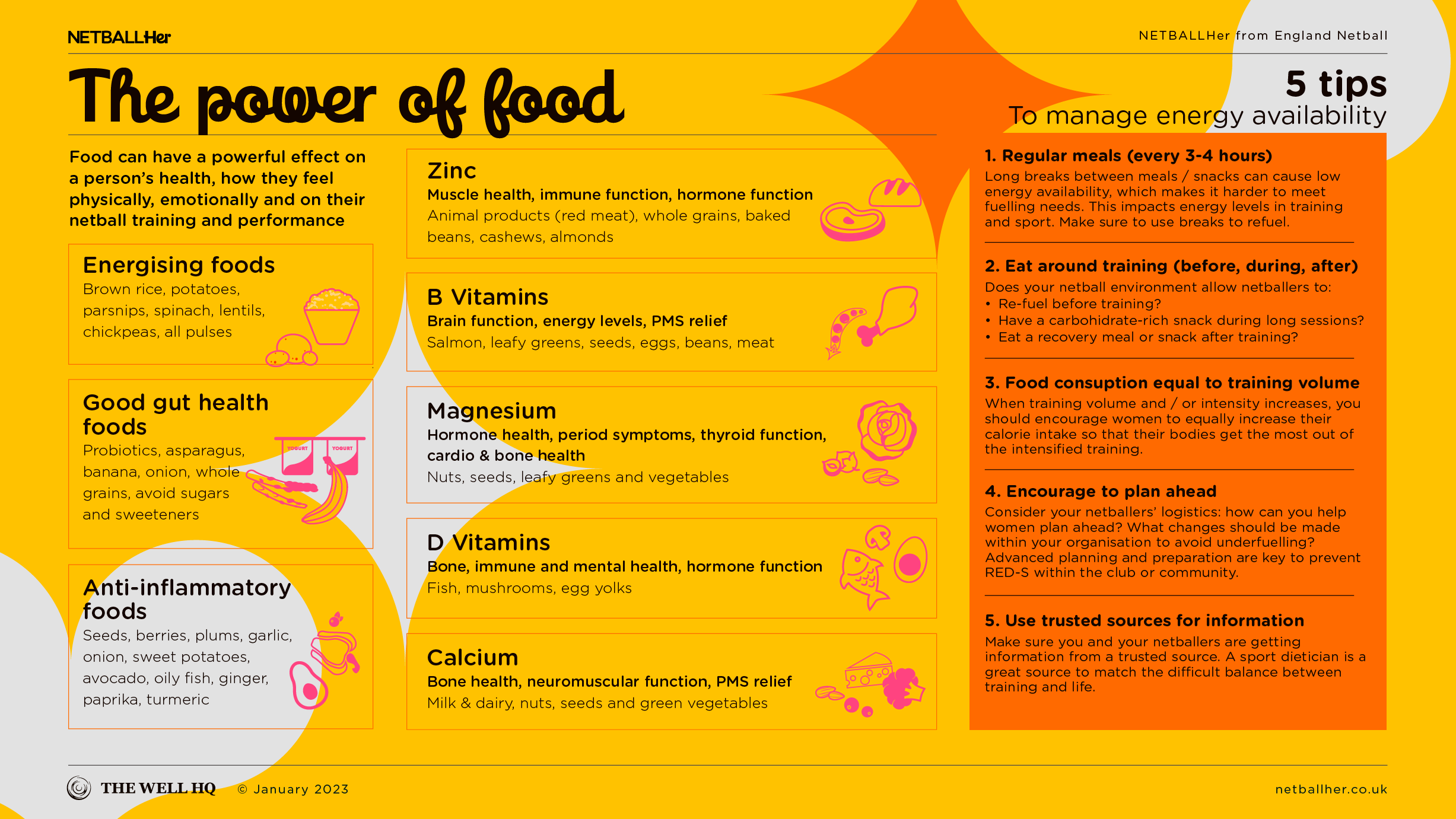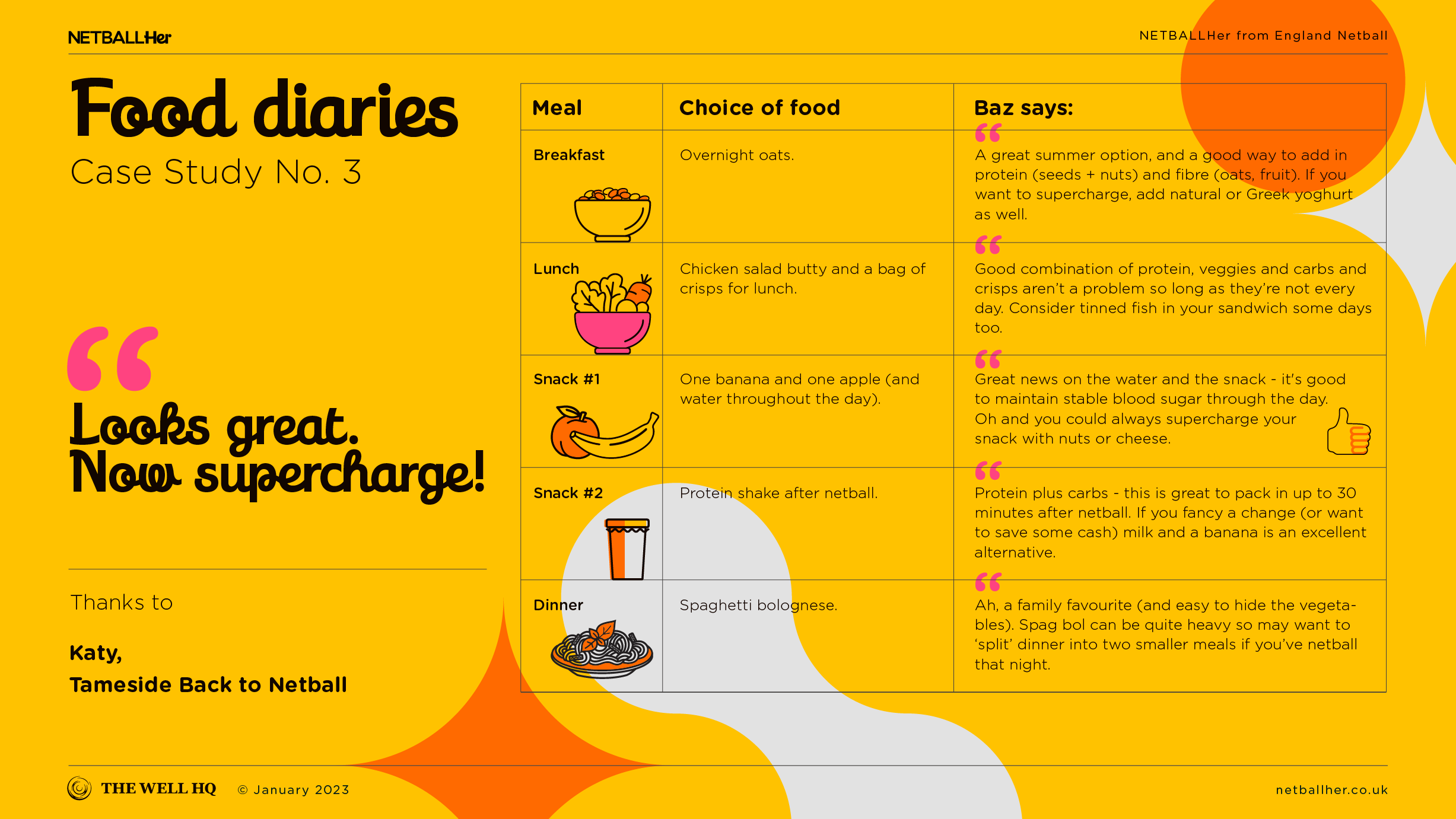Click play for an audio readthrough of this article
A beginner’s guide to macros and what eating healthy is / isn’t. Spoiler alert, carbs are good …
It’s been said countless times that women have more emotional attachments to food. That women connect certain foods with guilt and shame. That women feel a sense of duty to eat a certain way … and punish themselves for any perceived slips.
Typically speaking, women have more complex relationships with food and we can probably chalk up a lot of the healthy eating dilemma to the mixed messages and manipulative media women are exposed to.
Because the question what does it mean to eat healthily isn’t super difficult to answer.
But before we do, we’ll first put to rest what eating healthily is not.
Eating healthily is not cutting out whole food groups. It is not skipping meals. It is not fasting. It is not swerving carbs. It is not eating only green leaves forever more …
Eating healthily is not shorting your calorie balance because that’ll compromise your energy levels. It will compromise your muscle adaptation. It will compromise your bone strength. It will compromise your immune system. It will compromise your injury resilience. It will compromise your menstrual health. It will compromise your hormonal health. It will compromise your emotional health.
That’s what eating healthily is not. Now, what it is …
Carbs are good
Shock horror. Carbs are good. Carbs fuel everything women do.
Think of it like this: carbs keep the lights on. Carbs generate the electricity our bodies need to function as they should. Carbs power all the systems we can’t see … yet we can’t do without. Carbs keep the hormonal system, the nervous system, the immune system, the menstrual system and the neuro system in 24/7 operation.
Women’s bodies are particularly sensitive to the availability of carbs, hence why not consuming enough of them – whether by accident or design – will cause systems to a) stutter b) go wonky and c) start shutting down.
This is the reality. Women need carbs. But what’s also reality is that carbs have been vilified to the extent even top professional athletes don’t consume enough of them.
We’ve laid out the default role of carbs in the body, but they do another vital job that’s particularly relevant if you’re an active woman. They help you burn fat.
By now you may know that women’s bodies are great at using fat as a fuel to power exercise … but did you know carbs are still essential in that mix? Carbs are like the meatgrinder that shreds fat into energy the body can actually use.
Put simply: if you want to burn fat you need carbs.
Carbs: how much is enough?
We always advise that active women try to eat every three hours or so and, as a general rule at mealtimes, carbs should fill at least half of your plate.
Sure, this is tricky if your training times clash with mealtimes, but a good workaround is to eat four small meals per day. Perhaps as so:
- Between 7am and 9am
- Between 11am and 1pm
- Between 3pm and 5pm
- Between 7pm and 9pm.
This kind of schedule works brilliantly, especially on really busy days, and gives you permission to eat properly, regularly. Training on an apple and some almonds won’t touch the sides.
We said you should try to ensure half your plate is carbs, and you should aim for things like wholegrains, fruit and veg, and complex carbs like sweet potato, brown bread, brown rice, beans and lentils. Sure, sugar is a carb but it’s not a good option for obvious reasons. Avoid.
If you aren’t able to eat a full meal in the hour or so before training then at least aim for a carby snack – think fruit yoghurts, bananas, bagels with cream cheese and nut butters.
If you train intensively most days, we recommend you pack in another serving of carbs and protein within 30 minutes of your session. Do that and you’ll hit the peak window to refuel and repair with maximum efficiency (but note that this isn’t necessary if you’re training or playing just a couple of times a week).
For those of you who don’t mind weighing things (like yourself and your food) then there’s a formula to work out your carb requirements: multiply your bodyweight in kilograms by six and scrub out the K.
That number, in grams, is your magic carb number.
You can of course use an app to keep tabs on your macros (fats, carbs, protein) but try not to go all-in – apps can be addictive and drag you into obsession.
Protein
If carbs are superfuel, protein is your supernutrient and an essential in almost everything your body does. Protein is key, for example, in immune system functioning, hormone health, tissue repair and muscle growth. It’s especially vital women take advantage of protein’s numerous positives at certain times in life; namely pre and postnatal, and when going through the stages of menopause.
As an active woman you should aim to make protein 25-30% of your total calorie intake. That’s about a quarter of your plate. And remember to include it at each meal … the body doesn’t store protein so you always need to top up.
We recognise preparing a protein portion is easier at home than out or on-the-go, so try to think and plan ahead. It might be time to resurrect the packed lunch box. Several coffee shop chains now offer things like ‘protein pots’, so it’s also worth researching and testing protein-rich options you can grab out in the world.
Proteins are made of amino acids, three of which (leucine, isoleucine and valine) offer readily available energy sources. You can get these via meat (especially poultry and beef), fish, eggs, chickpeas, nuts, seeds and brown rice. Include any of the aforementioned things in your pre-workout meal and they’ll help in several ways; not least they’ll limit your physical and mental fatigue, and ensure your carbs last longer.
If you’re a very active woman – working out five or more times per week – then you’ll need more protein than your average bear, especially post-exercise so you can accelerate and optimise your recovery.
I don’t need all that protein do I?
Some women buck against all this protein. They might tell you that they do cardio (not weights) so gorging on protein ain’t necessary.
It more or less is, though. Maybe not the gorging part but active women do need more post-exercise protein than men, and that 30-minute window after exercise is the ideal time to reload. During this window the female body is primed for muscle recovery and, in that state, it’s essentially craving protein. Your job is to give it what it wants.
Quinoa, eggs, turkey and fish are optimal choices – they won’t just reduce muscle soreness, they’ll support your immune system too.
Now you’re thinking, “how do you expect me to eat a fish within 30 minutes of a workout five days a week?” We get it. Quinoa, eggs, turkey and fish are the optimal sources but not necessarily the practical choice. It’s perfectly fine to stay simple, and if a glass of milk or a yoghurt works for you then it’s all good.
Fat is your friend
The third macro musketeer, fats are an important fuel source. They’re also essential for cell health, great for hormone levels, and they help us to absorb some of food’s vital vitamins.
As in the intro, many women restrict their fat intake due to the belief that eating fat = being fat. We need to remove this thick layer of guilt and change the message because fat is a friend. Well, to a point.
As an active woman, circa 20% of your calories should be fat. Remember, women are far better at burning fat during exercise than men. Should your fat intake fall below its required level, you risk running out of fuel and hitting the reserve tank. In our case, the reserve tank is our muscles’ fat stores … and tapping this tank risks damaging muscles themselves.
What fat is good fat?
There’s fat and there’s fat. There’s the right fat and there’s the wrong fat. Rule of thumb: processed foods = bad, whole foods = good.
No one’s saying you can’t have the odd McBurgertown double burger and fries with a deep-fried doughnut for afters, but we’re ideally aiming for little and often whole-food saturated fats. That means full-fat dairy and grass-fed meat. We’re also interested in the polyunsaturated and monounsaturated fats found in things like seeds, nuts, oily fish (salmon and trout), flaxseed oil, olive oil and avocados.
Further, it’s essential to incorporate foods rich in omega-3 and omega-6 such as flaxseeds, soybeans, oily fish and walnuts. These healthy fats have great anti-inflammatory properties to reduce muscle pain and boost recovery. It’s all great stuff for active women.
Low fat foods and the Keto veto
Lastly, we have to veto the keto. A keto (ketogenic – low carb, high fat) diet isn’t a good way to go for active women. Research shows that athletes on a high fat / low carb diet perform poorly … simply because the body needs a balance of carbs and fats to fuel exercise of different intensities.
Similarly, low fat versions of foods are best avoided too. In a bid to scale back the fat content in a product, manufacturers often pad it out with extra starch and sugar – things that can cause blood sugar levels to spike.
Remember, fat isn’t bad per se, so a low-fat product runs the risk of scaling down the good and ramping up the bad. And if the additives cause blood sugar spikes then your body may release insulin and drive up your cortisol (stress) levels. In fact, extra cortisol may prompt your body to store fat … so it’s kinda self-defeating.
What does it mean to eat healthy?
To return to the initial question, what does it mean to eat healthily, the takeaway (not the McBurgertown variety) is that eating healthily is balance. It’s not restricting this or cutting that, it’s about giving your body all of what it needs.
And what does the active female body need?
It needs carbs to keep the power on, fats to burn as fuel, and protein to rebuild so you can do it all again better, faster, stronger.
Your plates at mealtimes: half carbs, a quarter protein, and a quarter fat.
Your pre-exercise snack: carby.
Your post-exercise snack: carbs and protein.
It’s simple in principle. Now comes the practice. Bon appetit.
As a reminder, the content of the course belongs to The Well HQ. You have permission to access and use the content yourself or, if you are an organisation, for the number of users selected, but are not otherwise permitted to share such content with others, all in accordance with our Course Terms and Conditions.


